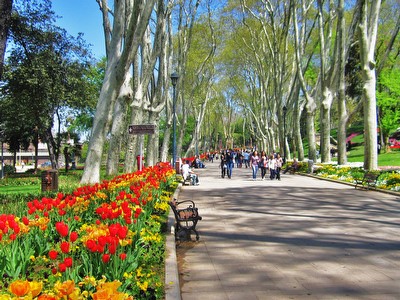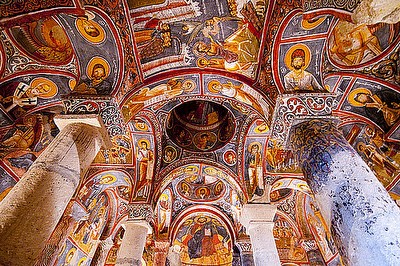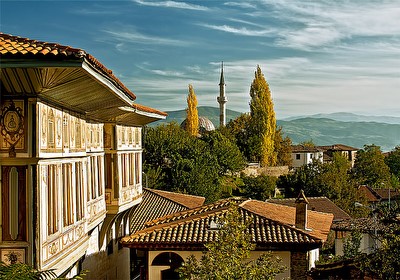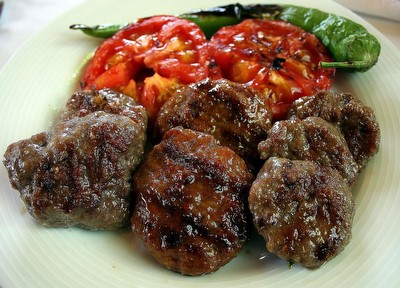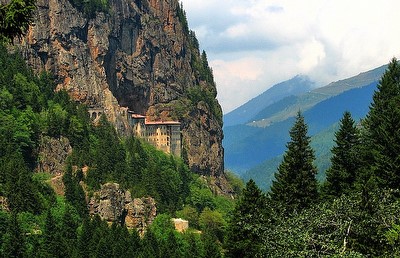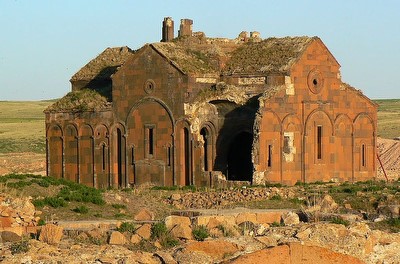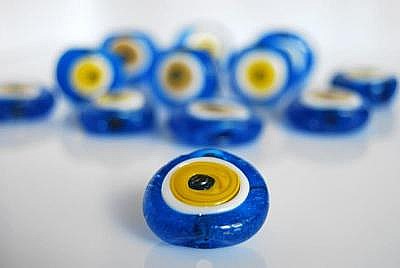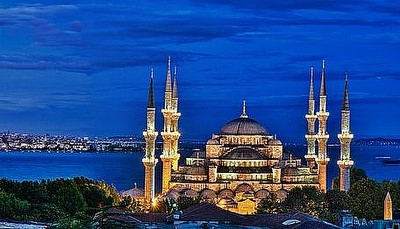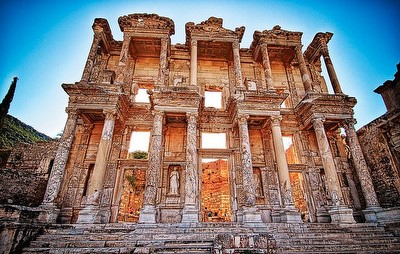CHRISTIANITY IN THE BLACK SEA REGION
The city and region of Trabzon is home to a number of Christian Churches and Monasteries.
The Hagia Sophia of Trabzon was built around the year 1250 as a Greek Orthodox Patriachal Church under Emperor Manuel, ruler of the Trapezounta Empire of Pontus. The church was named Hagia Sophia, the Church of The Holy Wisdom, after the great Basilica of Constantinople. Although not as large, the church is still very impressive with magnificent frescoes and iconography. It was constructed in the traditional architectural shape of a cross, being 22m long, 72ft, and 11.6m, 38ft wide. Alongside the church is a tower, which has been argued over as to its traditional use, since bell towers were not used during the time of its construction. After the fall of Constantinople, and the rise of the Ottoman Empire, the church was converted into a mosque in 1453 by Mehmet II. However, during the Ottoman rule, the church was used as a military warehouse, a makeshift hospital, and a mosque again in 1880. It was closed in 1931 and re-opened in 1935 as a museum, now it is using as a mosque.
Today it is acknowledged as being one of the most precious monuments of Byzantine history.
From the Avrasya Bazaar, Russian Market, a climb up Atatürk Alani, which is the main street in the old town, brings one to a square surrounded by trees and several cafes. To the north of the square is a narrow alleyway, at the side of the Güloğlu Restaurant, which brings one to the Church of Santa Maria. The church was founded by the Capucin Order in 1869 when there was a large Catholic community in the town. It still serves the dwindling community and a hostel within the compound offers cheap accommodation to travellers, regardless of denomination, in return for a small donation.
Along the Uzun Sokak, a street to the right, takes one past several silversmiths workshops and to the Church of Saint Anne, the 9thC Byzantine Kücük Ayasil Kilise. Although having undergone restoration in late 1990s only a few traces of the frescoes that once graced the walls are visible. The street to the back and on the left of the Uzun Sokak brings one to the Yeni Cuma Camii, the New Friday Mosque.
Originally the church was dedicated to Saint Eugenios, the Patron Saint of Trebizond. His skull was placed in the church and the holy relic is reputed to have saved the town from the Selçuks when they lay siege to the town in 1223.
3km to the west of the city is the church of Aya Sophia which stands in what was originally a monastic complex. It was converted into a mosque in 1461. Its design is unusual in that it incorporates Selçuk, Armenian and Georgian features. However it is its Byzantine frescoes that are its claim to fame. A six year restoration programme began in 1957 and they depict scenes from the New Testament, such as the Ascension of Christ, on the vault of the central apse, and the Miracles of Christ in the Narthex.
A 30Km drive, south along the E97 road, brings one to the the car park at the base of a cliff. The path leading to the Monastery of Sumela is 1200m long, rising 300m from the base, The mountain side is covered with lush vegetation and trees, hence the monastery is obscured from view. About 15minutes from the summit, it appears between the branches of the trees, looking as if it is just stuck on to the cliff face. As one reaches the entrance one climbs up several steps and through the only door into the courtyard. In bygone days a visitor would be offered a glass of raki accompanied with cheese and olives whilst they signed the visitor's book. The last entry in the book, which is kept in Greece, is dated 24th of June 1921. The monks cells to the right, look out over the valley below. The Chapel, to the left, has the most amazing frescoes which date back to the 14thC, many of which, over the centuries, have been "added to". The legend is that St Luke painted an Icon of the Virgin Mary. The Icon took flight from Athens and flew over the Aegean and along the Black Sea coast, finally coming to rest on a small ledge on the precipitous Black Mountain. Two monks,Sophronicus and Barnabus, set out to search for the missing Icon. The two had a vision which guided them to the Altindere Valley in the Pontic Alps. Instead of returning the Icon back to Athens they built a shrine around the picture, calling it "Panayia tou Melas", "Virgin of the Black Rock". There is evidence that a monastery has stood here since the 10thC. It was several centuries later, during the time of the Grand Comneni, that Sumela rose to prominence, thanks to the generosity of Imperial patronage. Alexis III ordered the re-building of the monastery in 1360. Imperial edicts exempted it from taxes and granted huge estates in return for its guarding, along with many other monasteries, the Macka Valley. They became an early warning system, for the Imperial Empire, of any possible attack.
During Ottoman times it retained its privileged status and received generous endowments and several Imperial visits. Its isolated position granted many criminals refuge. It functioned as a place of worship and a monastic retreat until 1923 when the last monks were evacuated to Greece as part of the Turkey's-Greek population exchanges, under the Treaty of Lausanne.
Some of the finest churches are to be found between Artvin and Tortum. As Christianity died out, many of the churches were converted to mosques and, due to their continuous use, are carefully maintained, whilst the remainder have fallen into disrepair. Sitting on a terrace, beside several small pools, which overlook the mountains, is the 11thC Bishop's Church of Ishan. The interior is decorated with several murals of flying angels and the windows are adorned with rich stone carvings. 35Km south the road turns to the right towards the massive 10thC monastic church of Vank. The exterior gable is decorated with reliefs of the Archangels Gabriel and Michael. The interior has some frescoes of Jesus and Mary. The building is today nothing but a shell, having fallen in to disuse and through gross neglect. 14Km further south a bridge brings one to the village of Bagbasi, with its 10thC church of Haho. The church was built of locally quarried soft yellow sandstone and was originally part of a monastery. It has been lovingly restored and now serves as the village mosque. The walls are carved in comic reliefs of biblical scenes, Jonah and the Whale to name one. Strange mythical beasts are depicted in some of the carvings. The mosque is usually locked but can be viewed upon request. The key is kept at the village café-store.
Time to discover Mutlu's Black Sea


